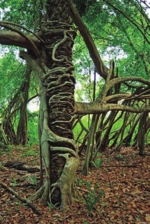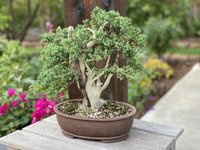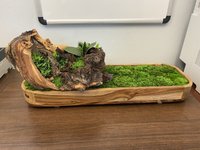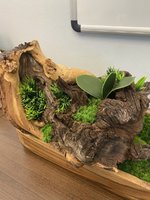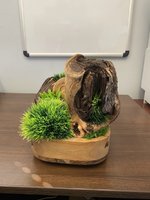ob1page
Seedling
Hello. I am new to bonsai and to this community but I am hoping someone can give me some advice. I came across this piece of Mopani wood at my local aquarium store and I had to buy it. The dimensions are 15" tall, 8" deep and 10" wide. The spot I was thinking about mounting the bonsai is 6" wide by 8" deep. I had planned on putting it in an closed terrarium however I am having trouble finding a container large enough that is not an aquarium to display it and I have always been fascinated with bonsai so I started researching. I came across an article about Tanuki and a lightbulb went off. I want to design something for my office so an indoor bonsai is required. I am leaning towards either an Ficus Benjamina or an Chinese Elm but I am open to all ideas. My plan is to Dremel out a channel in the rear of the Mopani and either drill through the back or router to the top and place the bonsai at the top of the Mopani. I want to eventually train the bonsai to cascade down in a similar fashion to the pictures attached with the bonsai on the rock. The shape of the Mopani will allow for the root ball to sit directly below so I just need to find a pot tall enough to house it all. Ideally I will not be repotting this any time soon.
Is this a feasible plan and is it something I can plan on having some longevity? I do not want to put in the effort for a short term display. Any advice you can give is greatly appreciated.




Is this a feasible plan and is it something I can plan on having some longevity? I do not want to put in the effort for a short term display. Any advice you can give is greatly appreciated.





